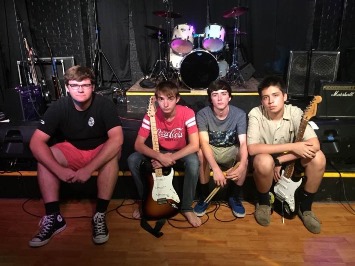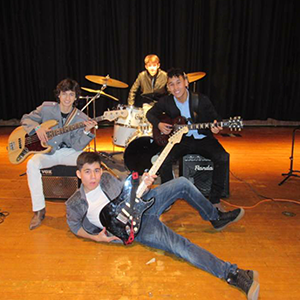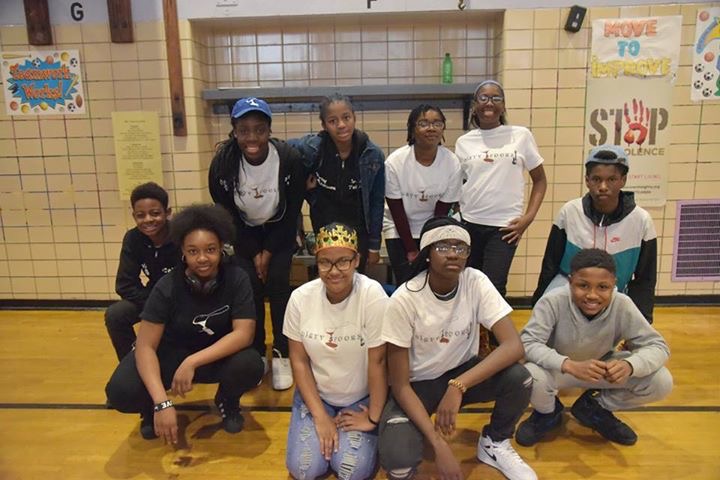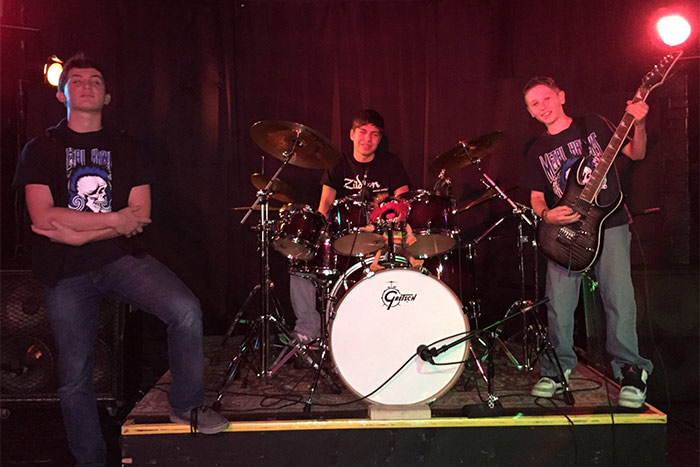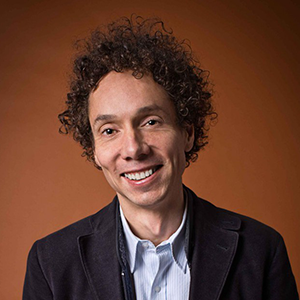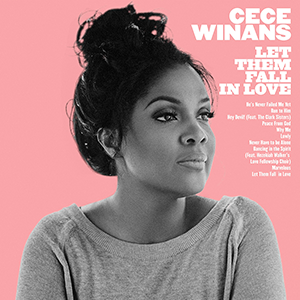“Poetry is what in a poem makes you laugh, cry, prickle, be silent, makes your toe nails twinkle, makes you want to do this or that or nothing, makes you know that you are alone in the unknown world, that your bliss and suffering is forever shared and forever all your own.” ― Dylan Thomas
We’re so excited for the second year of the Queens Library Summer Poetry Contest! Last year, poets of all ages and experience levels wowed us with their words. We can’t wait to read this year’s entries!
In the meantime, if you’ve got an idea brewing for a poem but feeling a little stuck or unsure how to turn it into rhyme or verse, here are some tips to get your creative juices flowing.
• Avoid clichés. Think about the themes or feeling the cliché is actually capturing, and phrase that with your own words.
• Use metaphor and simile – that is, describing something as something else (metaphor) or by likening the object to something else (simile). These techniques evoke stronger imagery.
• Clear your head! Take a walk like Wordsworth, eat an apple like Agatha Christie, drink tea like Samuel Johnson – just do something to reset so that when you come back to a blank page, it’s a challenge, not an obstacle.
• Try to write a ‘found poem’ by extracting key words and phrases from longer works of poetry or prose. You can then format it by rearranging the words to create your desired rhythm. This is also a great exercise for kids!
So what are you waiting for? Sit down, crunch on an apple, and get started!
Submit your entry HERE before July 31!
Plus: Hone your skills in these poetry programs
2017 Summer Poetry Contest Workshop
Thursday, July 13 @ 6pm
Central
Teen Summer Reading Program: Poetry Reading and Writing
Thursdays, July 13 – 20 @ 4pm
Forest Hills
Poetry Slam!
Thursdays, July 13 – August 4 @ 3pm
Lefrak City
Write Now! with NY Writers Coalition
Saturdays, July 15 – December 30 @ 2pm
Broadway
Poetry Club
Monday, July 17 @ 12:30pm
Auburndale
Sources:
• http://mentalfloss.com/article/62431/16-famous-authors-tips-writing-better-poetry
• http://wordsdance.com/2013/07/50-powerful-quotes-about-poetry/
• http://www.readwritethink.org/files/resources/lesson_images/lesson49/RWT028-4.pdf
• http://www.readwritethink.org/parent-afterschool-resources/tips-howtos/help-child-write-poem-30317.html
• https://jerz.setonhill.edu/writing/creative1/poetry-writing-tips-how-to-write-a-poem/
They’re back to battle it out for round 2: say hello to Summer Haze, veterans of the competition who will once again treat the audience to an array of punk bangers.
The Long Island four-piece, comprised of singer, guitarist, and songwriter Jack Turner, lead guitarist Clark Adomaitis, bassist Tim Cartmell and drummer Evan Declemente, will deliver some of their favorite original tracks.
Make sure to get your tickets so you can rock out to dance-punk numbers like “I Would Do Anything” and “Home Field Advantage.”
Welcome back, boys!
Meet Battle of the Bands contestants Apollo 4! The Bayside High School students first appeared on each other’s radars when David Landau and guitarist Christian Merano met at a spring concert.
As they got to know each other’s performance styles through various high school band performances, it was a natural choice to start jamming out of school hours as well. They later joined forces with a second guitarist, Ian Musfid, and a drummer, Daniel Cruz, anchoring their sound with percussion.
Now, the band plays live regularly, delivering exciting original compositions and covers of their favorite tracks.
Dirty Spoons is a young band fresh out of Brooklyn with a unique sound and a strong social conscience. They’ve honed their live performance skills at the Save Our Streets talent show, the Best of Bed-Stuy talent, the DYCD Decades talent show, and several more. The 10-person group met in an after-school music class, and quickly discovered their ability to collaborate and experiment with new techniques and genres together. The group consists of vocalists Chris Torres and Kiara Price, drummer Carlyle Clark, guitarist Leonard Campbell, keyboard players Collins Eze and Mary Kareem, saxophonists Noah Idowu and Queda Martin, and trumpeters Jennifer Akpofure and Trevis Clarke. The name ‘Dirty Spoons’ represents the diverse personalities, talents and influences that make up this inimitable band.
To catch Dirty Spoons live, make sure to get your free tickets today!
It’s time to meet the first contenders for this year’s Queens Library Battle of the Bands!
Metal Hawks hail from Long Island, and have been playing together since 2014. They’re also veterans of the teen live music scene, and if you check out their videos on Facebook and Instagram, it’s clear that these guys know their sound in and out.
Metal Hawks consists of axeman John Barry, drummer Alex Hertler, and double-duty bass player and vocalist Ryan Daversa.
The three are dedicated to refining their hard rock and heavy metal craft, and have played at a range of venues, including The Hub, The Crooked Rail, and the West Village’s acclaimed musical proving ground, The Bitter End.
We can't wait to see them dominate the stage on Thursday, July 27!
Find out more about the Battle of the Bands here!
Looking for new music? Look no further than your local Queens Library!
Every month, our expert staff will bring you the best of what's new in our physical and digital collections.
Check out our music recommendations for May 2017!
The xx, I See You
The xx is a British four-piece pop band whose music you may recognize from a number of TV shows and commercials. This isn’t to say that they have no musical integrity; it’s just that their subtle and understated tunes work well as a soundtrack. Their third album, I See You, expands their musical horizons a bit, opening their signature sound to new instruments and beats. The male/female vocal interplay remains breathy and endearingly awkward, but the drama behind them is a little more intense and interesting. Watch the xx perform their hit single “On Hold” on Saturday Night Live.
Brantley Gilbert, The Devil Don’t Sleep
Brantley Gilbert is a country rock artist from Georgia. His style of music encompasses country themes set to rock music, with some hip-hop styling thrown in for good measure. Though frowned upon by country traditionalists, this style is gaining in popularity with younger fans and his new album debuted at number 2 on the Billboard 200 chart. The first half of the album contains the songs that are or will be club hits, while the second half showcases Brantley’s more soulful side. Try one of his hit videos on for size with the first single “The Weekend."
Chris Thile & Brad Mehldau, Chris Thile & Brad Mehldau
Chris Thile plays the mandolin and sings folk tunes. Brad Mehldau is an accomplished jazz pianist and composer. Put them together and you have Chris Thile & Brad Mehldau, the debut CD by this intriguing duo. Though these two musicians have played live together often, this is their first studio recording. Comprised of covers and original songs, the album takes the listener on a journey to the heart of American music that finds common ground between jazz and folk, blues and country. This is music for musicians, and for those who appreciate pure artistry. Watch them perform the original tune “The Old Shade Tree” live on CBS This Morning.
Fat Joe & Remy Ma, Plata O Plomo
Bronx rappers Fat Joe and Remy Ma join forces for the new album Plata O Plomo, which translates to “money or bullets,” a phrase made popular by Pablo Escobar. It has been a long time since either artist has released new material, but you couldn’t tell from listening to the CD. In fact, the first single “All the Way Up” has already sold 2 million copies and been nominated for the most overplayed song of the year. The rest of the tracks are mainly club-friendly, referencing their '90s style with current production dynamics. It’s a formula, but one that seems to work. Watch them perform the latest single “Money Showers” on Jimmy Kimmel Live.
 Wyclef Jean, J'ouvert
Wyclef Jean, J'ouvert
Rapper, writer, actor, and activist Wyclef Jean is going back to his Haitian roots with his latest release J’ouvert, a precursor to his upcoming album The Carnival Vol. III. This makes sense because the title comes from the name of the early morning party that kicks off Carnival in Caribbean cultures. Wyclef is ready to get festive with some upbeat tracks like “Party Started” and “If I Was President 2016,” a playful take on our current political situation. There are more serious themes and many references to Black Lives Matter, but perhaps the best pop crossover track is his ode to the country of his birth and the focus of his political activism, “Lady Haiti."
The Jesus and Mary Chain, Damage and Joy
As a mainstay of alternative rock radio, The Jesus and Mary Chain combined swirling feedback and distortion guitars with surf and bubblegum melodies to create a wall of toe-tapping noise that triggered the shoegaze movement of the 1990s. The core of the Scottish group is the brothers Jim and William Reid. Like most bands of siblings, they grew to hate being around each other and the group broke up in 1998. They’ve gone on to solo projects and reunited occasionally for live shows but now, almost 20 years later, they are back with a new studio album. While it may not capture their glory days, it is a welcome bit of buzz and Britpop for those who miss MTV's 120 Minutes. Listen to the song “Amputation."
Trey Songz, Tremaine
Most singers don’t wait for their seventh album to use their own name as the title, but Trey Songz (aka Tremaine Neverson) did. Perhaps it’s his way of letting his listeners know that this one is more about the real Trey and not his alter egos Trigga or “Tremaine the Playboy” as seen on his VH1 reality dating show. As evidenced by many of the songs on the album, it seems that a more mature Trey is emerging, and the naughty R&B of his past is being replaced by more soulful tunes. For every immature, leering track like “Animal,” there are two counterpoints like “Come Over” and “Break from Love." In some ways, it represents the struggle to remain young while no longer being able to deny getting older and, hopefully, wiser. This is most evident on the track “Playboy"; listen to the clean version.
Train, A Girl, A Bottle, A Boat
Train is a rock and pop band from San Francisco capable of a range of music from dance pop to Led Zeppelin covers. They achieved success in 2001 with the mega-hit “Drops of Jupiter (Tell Me)” and have gone on to sell 10 million albums and 30 million tracks worldwide. Their 10th studio album, A Girl, A Bottle, A Boat, is their first without lead guitarist Jimmy Stafford and, as expected, the sound is heavy on the pop, light on the rock. That didn’t stop the first single “Play That Song” from already being certified platinum. They will be touring the East Coast in June, but until then you can stream the new album on Freegal.
Charlie Wilson, In It To Win It
Also known as Uncle Charlie, Mr. Wilson is an R&B pioneer and enduring influence on every new generation of performers from gospel to rap. In 2013, he won a BET Lifetime Achievement Award and the broadcast of that ceremony broke viewership records for that channel. Charlie came to prominence as the lead vocalist of the funky Gap Band, but his solo career has showcased his variety of styles and talent. His new album is full-on gospel lyrically, but covers a broad spectrum of styles musically. Guest stars Snoop Dogg, Pitbull, Lalah Hathaway, and others help spread the word, showing their love and appreciation for a man they all know as “Uncle." You can stream the album on Freegal.
Aimee Mann, Mental Illness
Aimee Mann started her musical career as a member of the 1980s new wave band ‘Til Tuesday. Since they broke up in 1989, Aimee has been forging a solo career focused on songwriting and performing music that falls under the umbrella of “indie” but really runs from folk ballads to power pop. She is a critical darling without much commercial success, a fact parodied on the TV show Portlandia, where she played herself as a cleaning woman trying to pay the bills. Chances are that her new album Mental Illness won’t elevate her star status, but it is a solid work of dark, acoustic songs best heard on a rainy day or while working through a depression. If you think Joni Mitchell’s Blue is a classic, give this one a try on Freegal.
Thank you to writer and critic Malcolm Gladwell for this letter on behalf of our City's libraries.
If you'd like to help us ask our elected officials to Keep Investing In Libraries, visit speakup.queenslibrary.org.
Dear Friend,
As a kid, the highlight of my week was Wednesday evening, when my mom would drive me into town to the Public Library. The library was a magical place that gave me—a kid from a tiny town—a window on the whole world. I've never lost that feeling. And I've never felt more strongly that every child deserves that same window on the world.
Since I moved to New York City 20 years ago to become a staff writer at The New Yorker, I've relied on public libraries. They are open and welcoming to all, from writers like myself to kids learning to read, adults learning English, and immigrants gaining their citizenship.
That's why I'm asking you to join me in calling on City leaders to invest in all New Yorkers by investing in our libraries.
Even though we know how important libraries are to New York City, a recent study found that our libraries still lag behind other large cities in how many hours they are open each week. In fact, only 7 percent of NYC libraries are open seven days a week, and only 3 percent of libraries in the borough of Queens are open seven days a week. This needs to change: for some families, weekends are their only chance to visit a branch and expand their horizons.
At the same time—as demand for library services continues to climb—branches across the city are in serious disrepair and need to be renovated. It’s hard to focus on your work when water is dripping on to your notebook from the roof, or the heat isn’t working.
Libraries are a lifeline—not a luxury—for New Yorkers. Is there anywhere else that New Yorkers can get free access to education, information, and other resources in a safe environment?
Strong support from city leaders has never been more important. That's why I'm asking you to sign a letter asking Mayor de Blasio, City Council Speaker Melissa Mark-Viverito, and your City Council member to invest in our libraries.
This time is critical. The mayor and City Council are in discussions now to talk about funding for our libraries. Please take one minute to send your message now.
Your voice matters. We know that the Mayor and City Council see each letter sent to them. When the people of New York join together to say something is important, City leaders will listen.
I know I wouldn't be a writer without learning to love reading at my local library as a child. Let's make sure other New York City kids get a chance to follow their dreams just like I did.
Malcolm Gladwell, Writer
For Queens Library
May is Asian-Pacific American Heritage Month, and we're pleased to honor some prominent figures of Asian and Pacific Island descent that have made great contributions and added to the rich cultural tapestry of the United States.
We will feature notable people from a variety of professions and careers, with a special focus on writers. Check this blog post every week in May for updates!
May 3: Gish Jen
May 8: Aziz Ansari
May 11: Han Ong
May 15: Kristi Yamaguchi
May 25: Carmelyn P. Malalis
 Author Gish Jen was born on Long Island in 1955 and grew up in New York, in Queens, Yonkers, and Scarsdale. Her parents were first-generation Chinese immigrants who came to the United States in the 1940s.
Author Gish Jen was born on Long Island in 1955 and grew up in New York, in Queens, Yonkers, and Scarsdale. Her parents were first-generation Chinese immigrants who came to the United States in the 1940s.
Jen is a graduate of Harvard University, with a BA in English, and received her MFA from the University of Iowa Writers' Workshop in 1983. Her work began predominately with short stories, before she moved on to novels and non-fiction, and it focuses mainly on the Chinese-American experience and the clash of Eastern and Western cultures.
Jen has had short stories published in The New Yorker and The Atlantic Monthly, and has appeared four times in The Best American Short Stories. Her story “Birthmates” was included in The Best American Short Stories of the Century, edited by John Updike. She has published four novels, and a collection of short fiction, Who’s Irish?. Her fourth novel, World and Town, was awarded the 2011 Massachusetts Book Prize, and was nominated for the International IMPAC Dublin Literary Award.
Some of her other awards and honors include a National Endowment for the Arts Fellowship (1988), a Guggenheim Foundation Fellowship (1992), the Lannan Literary Award for Fiction (1999), and honorary PhDs from Emerson College (2004) and Williams College (2015). She is also is a member of the American Academy of Arts and Sciences, and served as Sidney Harman Writer-in-Residence at Baruch-CUNY in 2013.
Her second non-fiction book, The Girl at the Baggage Claim: Explaining the East-West Culture Gap, was published in February 2017, and uses personal anecdotes alongside cutting-edge research in cultural psychology. It has received high praise from The Washington Post, Library Journal, and Publisher’s Weekly. You can hear her speak on the themes of the book in a profile from WCVB/ABC. Photo credit: Romana Vysatova, via Wikimedia Commons
 Comedian Aziz Ansari was born in Columbia, South Carolina in 1984. His parents immigrated from Tamil Nadu, India.
Comedian Aziz Ansari was born in Columbia, South Carolina in 1984. His parents immigrated from Tamil Nadu, India.
Ansari is a graduate of New York University's Stern School of Business, but had already been working on his comedic chops in the local scene, with his material focusing largely on his personal life. He regularly performed improv at the Upright Citizens Brigade Theatre in Chelsea, and formed the comedy troupe Human Giant with fellow comedians Paul Scheer and Rob Huebel in 2005. The group garnered their own TV sketch comedy show that ran on MTV for two seasons.
He is most well-known for his character Tom Haverford on NBC’s Parks and Recreation (2009-2015), for which he was named one of 2009’s "Breakout TV Stars" by TV Guide, among much other praise from critics. During this time, Ansari made notable appearances in several major motion pictures, including Funny People, Get Him To The Greek, and This Is The End. He has also done voiceover work for animated films like Ice Age: Continental Drift and hit TV series such as Bob’s Burgers and Adventure Time, and he lent his voice to an animated video to promote donations for Oxfam America.
Ansari is also an author, and in June 2015 released his first book, Modern Romance: An Investigation, co-written by sociologist Eric Klinenberg. It takes a humorous look into the strange new world of online dating. The book was a New York Times bestseller and received praise from reviewers at The Atlantic, Rolling Stone, Paste Magazine, USA Today, and the A.V. Club.
In November 2015, his Netflix original series, Master of None, premiered, staring Ansari as a moderately successful comedian living and dating in New York City. His real-life mother and father were cast as his parents in the series. Though it has only aired for one season so far, it has already received numerous accolades, including a Peabody Award, an American Film Institute Award, and a Primetime Emmy Award for Outstanding Writing in a Comedy Series. Season two premieres on May 12, 2017. Photo credit: Aziz Ansari at the 71st Annual Peabody Awards Luncheon in 2012, via Wikimedia Commons
 Playwright and novelist Han Ong was born in 1968 to Han Chinese parents in Manila, Philippines. His family moved to Los Angeles in 1984, settling in Koreatown, where Ong attended a predominantly white high school. He soon discovered a love of writing, including poetry that he performed as part of the Asian Pacific American Coalition, and of course playwriting. Having been accepted into a young writers’ program at The Los Angeles Theater Center, Ong dropped out of high school at age 18, but would later earn a GED.
Playwright and novelist Han Ong was born in 1968 to Han Chinese parents in Manila, Philippines. His family moved to Los Angeles in 1984, settling in Koreatown, where Ong attended a predominantly white high school. He soon discovered a love of writing, including poetry that he performed as part of the Asian Pacific American Coalition, and of course playwriting. Having been accepted into a young writers’ program at The Los Angeles Theater Center, Ong dropped out of high school at age 18, but would later earn a GED.
Ong wrote dozens of plays in the mid-to-late 1990s—often performing in a few of them himself, though he had no formal training—including The L.A. Plays (1990), which ran at the American Repertory Theatre. Much of his work focuses on characters of multicultural backgrounds and differing sexual orientations, who feel as though they are outsiders. His style has been described as brute, poetic, and cinematic all at once.
1992’s Swoony Planet, a lyrical play about Asian immigrants in America searching for missing family members, won the Kesselring Prize for best new American plays. It was around that same time that he was given a commission from the Mark Taper Forum and a grant from the National Endowment for the Arts. At age 29, Ong was awarded a MacArthur Fellowship (commonly referred to as the “Genius Grant”); he is one of the youngest recipients ever, and the first Filipino-American winner.
Ong has also written two novels: Fixer Chao (2001) which was a Los Angeles Times bestseller and named its “Best Book of the Year,” and The Disinherited (2004), which was nominated for a LAMBDA Book Award. He works and resides in New York City. Photo credit: The American Academy in Berlin
 Kristi Yamaguchi was born in 1971 in Hayward, California. She is a fourth-generation descendant of Japanese immigrants, with her family first coming to live in the U.S. around 1899 via Hawaii. She was born with clubbed feet and wore casts for a period to correct them. At age six, Yamaguchi began ice skating, along with her older sister Lori, as therapy for her condition. Though her sister eventually stopped skating, Kristi continued with a passion. She was home-schooled for several years to accommodate her training schedule, but eventually graduated from Mission San Jose High School.
Kristi Yamaguchi was born in 1971 in Hayward, California. She is a fourth-generation descendant of Japanese immigrants, with her family first coming to live in the U.S. around 1899 via Hawaii. She was born with clubbed feet and wore casts for a period to correct them. At age six, Yamaguchi began ice skating, along with her older sister Lori, as therapy for her condition. Though her sister eventually stopped skating, Kristi continued with a passion. She was home-schooled for several years to accommodate her training schedule, but eventually graduated from Mission San Jose High School.
Her professional career took off in the mid-1980s. With partner Rudy Galindo, she won the junior pairs title at the U.S. Championships in 1986, the pairs title at the World Junior Championships in 1988, and the senior pairs title at the U.S. Championships in 1989 and 1990. A large part of their success as a duo came from their skills as singles skaters, with both winning competitions solo. During her run with Galindo, Yamaguchi individually won the World Junior Championship in 1988 and captured first place at the 1989 Skate Canada International.
In 1991, Yamaguchi decided to focus on her career as a singles skater and moved to Alberta, Canada. That same year, she took home the World Championship and secured a spot in the 1992 Winter Olympics in Albertville, France. Her teammates included Nancy Kerrigan and Tonya Harding. Rather than focus on advanced technical aspects of skating, Yamaguchi focused on the artistry and combination moves necessary to be a well-rounded skater. Her approach helped her win the 1992 Olympic gold medal for the United States, as well as successfully defend her World Championship. She then went on to tour with Stars on Ice from 1992 to 2002.
Yamaguchi has received many accolades for her sports career. She was inducted into the U.S. Figure Skating Hall of Fame in 1998, the World Figure Skating Hall of Fame in 1999, and the U.S. Olympic Hall of Fame in 2005. She was also a Goodwill Ambassador at the 2002 Olympic Winter Games in Salt Lake City, Utah. In 2008, she won the Inspiration Award at the Asian Excellence Awards, and the Sonja Henie Award from the Professional Skaters Association. Yamaguchi has made appearances on TV shows and in films, including Everybody Loves Raymond and D2: The Mighty Ducks. She also won the sixth season of ABC’s Dancing with the Stars with partner Mark Ballas.
Kristi Yamaguchi is also an author. She co-wrote Figure Skating for Dummies and has written three children’s books, including Cara’s Kindness and Dream Big, Little Pig. In 1996, she founded the Always Dream Foundation, which promotes childhood literacy and helps to fund education programs for underprivileged and disabled children. Photo credit: Kristi Yamaguchi backstage at The Heart Truth's Red Dress Collection Fashion Show during New York Fashion Week 2009 at Bryant Park, Public Domain, via Wikimedia Commons
 Commissioner Carmelyn P. Malalis was born in central New Jersey in 1974. Her parents immigrated from the Philippines in the late 1960s.
Commissioner Carmelyn P. Malalis was born in central New Jersey in 1974. Her parents immigrated from the Philippines in the late 1960s.
Malalis earned her BA in Women’s Studies from Yale University, and her JD from the Northeastern University School of Law in 2001. Prior to her 2014 appointment as Chair and Commissioner of the New York City Commission on Human Rights by Mayor Bill de Blasio, Malalis was a partner at Outten & Golden LLP. While there, she co-founded and co-chaired its Lesbian, Gay, Bisexual and Transgender Workplace Rights Practice Group; co-chaired its Disability and Family Responsibilities Discrimination Practice Group; and successfully represented employees in negotiations, agency proceedings, and litigation involving claims of sexual harassment, retaliation, and discrimination based on race, national origin, sex, gender identity, gender expression, sexual orientation, age, pregnancy, disability, and religion.
She is currently a member of the New York City Bar Association's Executive Committee and previously chaired and served on Human Rights Watch’s Advisory Committee of the LGBT Rights Project, the American Bar Association’s Committee on Diversity in the Legal Profession, the New York City Bar’s Committee on LGBT Rights, and the board of Queers for Economic Justice.
Malalis is the recipient of numerous awards, and was recently awarded the Community Impact Award by the Lesbian, Gay, Bisexual & Transgender Community Center, alongside Secretary Hillary Rodham Clinton. Photo credit: New York City Commission on Human Rights
Looking for new music? Look no further than your local Queens Library!
Every month, our expert staff will bring you the best of what's new in our physical and digital collections.
Check out our music recommendations for April 2017!
CeCe Winans, Let Them Fall In Love
As a member of the Winans family, CeCe is part of an American gospel music juggernaut. CeCe herself is the best-selling female gospel singer of all time, while the rest of the family are multiple Grammy and Dove music award winners. Only a star of Ms. Winans’ standing could make an album like Let Them Fall in Love in today’s music industry. It is obvious that a lot of love (and money) went into this production. The music is big and bombastic, recalling Phil Spector and his Wall of Sound. The songs are bold statements not hidden behind vocal gymnastics or studio trickery. Though it is gospel, even non-believers can testify that these songs should find a big crossover audience. You can listen to the whole album on Freegal.
Big Sean, I Decided
Detroit rapper Big Sean is back with his fourth studio album. With some help from his influences, Eminem and Kanye West, Big Sean has put together a theme record on the topic of rebirth. Many rappers have done a similar thing, looking back on where they’ve been and what it took to get to where they are. Big Sean, however, doesn’t see it as a turning point to a more mature sound but a natural progression in his evolving persona. The CD went straight to number one on the Billboard 200 and the lead single “Bounce Back” was performed on The Tonight Show Starring Jimmy Fallon and Saturday Night Live. It seems that Big Sean’s audience is following his evolution and hopefully his positive messages of hard work and gratitude will inspire others. Listen to the clean version of “Bounce Back."
Nathan East, Reverence
Philadelphia native Nathan East may not be a household name, but if you like Eric Clapton, Phil Collins, Daft Punk, or Barry White, then you’ve probably heard him play bass guitar on their recordings. Long considered a top studio musician, Nathan has also received accolades for his work as a founding member of the smooth jazz outfit Fourplay. Reverence is Nathan’s second solo album and is also a tribute to Earth, Wind & Fire vocalist Maurice White, who died in 2016. Many of the songs are cover versions of EWF songs, Nathan’s bass taking the lead where Maurice would have sang. It is an interesting concept and gives some EWF classics a new life. Listen to this update of “Love’s Holiday."
 Ed Sheeran, Divide
Ed Sheeran, Divide
Ed Sheeran is a British songwriter and pop star whose influences include Bob Dylan, Van Morrison, and Eminem. He rose to fame in the United States with the hit single “Sing,” which featured Pharrell Williams. However, his British fans considered that to be a departure from the more introspective, acoustic songs they preferred. Despite the conflicting opinions, his second album Multiply became the world’s most streamed album upon its release on the strength of that song. Sheeran’s follow-up, Divide, continues to break away from the acoustic and veer more towards low key electro-funk under the influence of friend Rick Rubin. It is already the third fastest-selling album in UK history behind Adele and Oasis. It is sure to be on many “Best of 2017” lists and part of this summer's soundtrack. Listen to the possible summer single “New Man.”
LeAnn Rimes, Remnants
LeAnn Rimes’ musical career could be best summed up as “too much, too soon.” In 1996, at age 13, she had a massive hit with the country song “Blue” and album of the same name. She was compared favorably with Patsy Cline and seemed to be a rising star. In the past 20 years, though, she has experimented with pop and rock music and had some personal and legal problems, and her audience has changed to the point where she is now more popular in Britain than America. Though LeAnn is mostly back on the country music bandwagon, her latest album covers a variety of styles. More importantly, it showcases her more mature sound and deserves a listen by the fans who might have abandoned her years ago. She may have taken a few twists and turns along her career path, but it seems like LeAnn Rimes has finally arrived where she belongs. Discover for yourself by streaming the album on Freegal.
Pitbull, Climate Change
Pitbull (aka Mr. Worldwide) is a rapper from Florida with roots in Cuba. Since 2004, he has been recording and building a network of writers, producers, and singers to help build him up to the global, Grammy-winning sensation he is now. Though most of his success has been as a collaborator with Jennifer Lopez, Shakira, and others, his solo work, often in Spanish, has yet to hit the heights. With his latest album, Climate Change, he’s trying to reach a larger audience by having every track be in English. The CD was supposed to be released a year ago, but studio delays caused it to be pushed back, even though the first two singles (“Freedom” and “Bad Man”) had already charted. In any event, it is here now and you can stream it on Freegal.
Kehlani, SweetSexySavage
Singer, songwriter, and dancer Kehlani first came to fame as part of the group PopLyfe, finalists on America’s Got Talent. Though she wanted to be a dancer, that career was cut short by injury, so she turned to singing, citing neo-soul artists like Jill Scott and Lauryn Hill as influences. Thanks to AGT, she took Piers Morgan’s advice and split from PopLyfe to go solo. Her debut album SweetSexySavage was preceded by hit singles “CRZY” and “Distraction,” both of which appear on the CD. Those songs and her promotional tour helped the album hit number 3 on the Billboard 200. Kehlani’s secret weapon may be her songwriting, which gets very personal and helps her audience relate to her emotional highs and lows. Watch the video for “Distraction."
Little Big Town, The Breaker
If four-part vocal harmonies hit your musical sweet spot, then you should enjoy Little Big Town, even if you’re not a big country music fan. This Nashville group has been on the country music scene since 2002, enchanting audiences with their bright songs that seem almost too bouncy for the Grand Ole Opry. If ABBA sang country, they might have sounded like Little Big Town. To be sure, they are an oasis of joy in the current sea of country rock bowing to the truck-driving, whiskey-drinking stereotypes that seem to dominate the airwaves. These days, a little laidback music to make you smile may be just the remedy to the nightly news. Watch Little Big Town perform “Happy People” live on The Today Show.
It’s National Volunteer Week 2017, and we want to celebrate the important role of volunteers at Queens Library!
All this week, to say Thank You to our volunteers, we will share their voices and let them tell you what their service to the Library means to them and their communities.
If you're interested in becoming a Queens Library volunteer, you can find out how by visiting volunteer.queenslibrary.org.
April 24: Andrea Aronowitz
April 25: Karen Lee
April 26: Gabby Hew
April 27: Aletta Seales
April 28: Paulette Weir
 I have been a Queens Library user for over 30 years. When I retired, I saw it as an opportunity to give back to the library, a chance to be helpful to the staff of Hillcrest Community Library and encourage readers of all ages to participate in the joys of reading. I love my time as a volunteer, especially if I'm shelving—then I get an opportunity to talk to patrons, recommend books I have read, or enjoy listening to what they have read.
I have been a Queens Library user for over 30 years. When I retired, I saw it as an opportunity to give back to the library, a chance to be helpful to the staff of Hillcrest Community Library and encourage readers of all ages to participate in the joys of reading. I love my time as a volunteer, especially if I'm shelving—then I get an opportunity to talk to patrons, recommend books I have read, or enjoy listening to what they have read.
I have always been a sociable person. I love to meet people, and volunteering at the library has given me the perfect venue to do this. I have met so many different people that, when I walk into the library, I can be assured that there are friendly faces to greet me, especially a lovely young lady who shares my name. She is studying to be a lawyer, but always has time for a chat. Or the retired teachers who, like me, find a visit to the library to be an important part of their lives. We trade information on books that have excited us, share our knowledge, and share the joys of retirement. I also enjoy interacting with the library staff, a great group of folks who value the written word as much as I do. Meeting children and their parents is fun—finding out what books they are reading, what excites them, and getting involved with their choices.
The most satisfying lesson I have learned is that my opinion counts. So many times, I have read a book and was able to share it with a patron. People come looking for me now to ask what I would recommend. Then, when I see them again, I get their opinions. I really enjoy this sharing! For instance, last week I read No Man’s Land by Simon Tolkien; I thought it was an amazingly well-written book. The same day, a lady asked me for a good book, and I gave it to her, and she was so pleased. Now, I’m waiting to find out if she shared my enthusiasm! My time spent as a volunteer at Queens Library is time well spent, and I sincerely hope to continue.
— Andrea Aronowitz, Hillcrest Library Volunteer Since 2014. Andrea is pictured here with Thomas Maxheimer, Assistant Community Library Manager at Hillcrest Library.
 I volunteer to be the reason that someone’s day is better. I volunteer to be the reason that someone’s belief in the goodness of others is reinforced. I volunteer to be the reason for someone to smile. I volunteer to be the reason that someone feels cared for and acknowledged.
I volunteer to be the reason that someone’s day is better. I volunteer to be the reason that someone’s belief in the goodness of others is reinforced. I volunteer to be the reason for someone to smile. I volunteer to be the reason that someone feels cared for and acknowledged.
A library can feel like a home away from home, and in some cases be a haven. I feel very fortunate to be a volunteer at Flushing Community Library, which has a huge presence in downtown Flushing.
The neighborhood has many middle-class and blue-collar workers from Asia, Southeast Asia, and Latin America. My family settled here over 30 years ago because so many ethnic groups co-existed in harmony in this area. Our neighbors shared the same goals of hard work, education, and community. For most of us, English was a second language, and parents learned alongside their children. Our library was the hub to bring together strangers and turn them into friends while learning English.
The Flushing library has doubled in size from when I was a youth, and the services that are available now for immigrant families are beyond anyone’s dream. I have helped with a Lunar New Year arts-and-crafts program at the library and taught children about Chinese culture and celebrating that holiday, while tapping into their creativity. Parents and caregivers have told me how much they enjoy having free, safe, and kid-friendly programs at the library. I recall a grandmother who expressed that this was the greatest library she had ever been in. She said she could come in with her grandkids any time to get books and DVDs, and to use the computers. She could read Chinese newspapers, find information, get things translated, and receive other kinds of support.
I have also worked on a summer STEM program that provided science and math lessons to elementary-age children, and teaching experience to high school interns. One of my fondest memories is when one of those children said she was happy to come to class during the summer because the library had air-conditioning and her apartment did not. She said that the interns were nice and she had made friends her own age instead of tagging after her older siblings. What stuck with me the most is when she said, “Everyone loves libraries!”
— Karen Lee, Flushing Library Volunteer Since 2013
 Volunteering at Queens Library allowed me to meet amazing people, expand my professional experience, and give back to the community. One of the highlights was tutoring pre-High School Equivalency students in the area of creative writing. I loved watching the students become more engaged with the material as they improved their skills.
Volunteering at Queens Library allowed me to meet amazing people, expand my professional experience, and give back to the community. One of the highlights was tutoring pre-High School Equivalency students in the area of creative writing. I loved watching the students become more engaged with the material as they improved their skills.
Additionally, I assisted the Volunteer Services department with web design, newsletter layout, and copyediting needs. I was mentored by staff members who graciously helped me to advance my editorial career. Interning with the Marketing department was also a character-building experience, as I proofed digital and printed materials, created blog content, and shot/edited videos for the Queens Library is for Everyone campaign.
I’m awed by the generosity displayed by library volunteers and staff, as well as the overarching dedication to community-building and public service. I would encourage anyone with a little extra time to spare to give volunteering a try—you won’t regret it!
— Gabby Hew, Central Library Volunteer Since 2016
 I serve as a volunteer at the Hollis Community Library. My specific title is “activity assistant.” In this role, I plan and implement activities for children with the children’s librarian and the other librarians.
I serve as a volunteer at the Hollis Community Library. My specific title is “activity assistant.” In this role, I plan and implement activities for children with the children’s librarian and the other librarians.
Recently, I was asked to plan a program for the celebration of International Mother Language Day, which was February 21. The program was a total collaboration between the library staff members and our customers.
Our manager set up a short video that showed the history of International Mother Language Day. A student did research on the country where she was born, Haiti, and shared it at the program. She also taught the participants some Creole words. One parent encouraged the children to find Mozambique, the country where she was born, on our world map, and taught them and the other program attendees some Portuguese words. After viewing the short video, children were encouraged to locate Pakistan on the world map. As a final activity, the children completed a Mother Language Word Search puzzle. They had to find and circle 17 different languages, including Spanish, Creole, Bengali, English, and Urdu. The children and adults worked together and enjoyed the challenge!
I was impressed with the level of engagement, respect, patience, and curiosity. The children were challenged and helped each other. And everyone who came to the program had fun.
Serving as a volunteer has given me the opportunity to interact positively with students, library staff, parents, and adult customers. This specific program exemplifies the appreciation for cultural diversity at Queens Library. As a retiree, I am truly grateful that I have an opportunity to continue to use my skills on a weekly basis as a volunteer. Being a Queens Library volunteer has made a positive impact on my life and the lives of others.
— Aletta Seales, Hollis Library Volunteer Since 2012
 When I discovered the Central Library Adult Learning Center, every opportunity I had I would bring the message about this amazing program to the people I serve in my workplace. “Learn to read and write at the Adult Learning Center” became my mantra. I had become an advocate, and went a step further to become a volunteer. In my daily life, I continue to find ways to help others—all around me are people who are in need, and you don’t have to offer a lot; small gestures can make a world of difference to their recipients.
When I discovered the Central Library Adult Learning Center, every opportunity I had I would bring the message about this amazing program to the people I serve in my workplace. “Learn to read and write at the Adult Learning Center” became my mantra. I had become an advocate, and went a step further to become a volunteer. In my daily life, I continue to find ways to help others—all around me are people who are in need, and you don’t have to offer a lot; small gestures can make a world of difference to their recipients.
I remember my very first student, who could only sign her name. She wrote words, but they were not legible; she kept writing, and I kept correcting. It was many years later when I was able to read a sentence that she wrote. She exclaimed with joy, “You can read what I write?”
Yes indeed, her determination for “higher” learning had risen to a level she did not expect. It was her “Eureka!” moment, and she felt good that the journey she was on came with possibilities.
The love of culture, learning about students’ lives and their interests, and accepting our differences all find their way into our weekly lessons.
As a volunteer, I have developed patience, I have learned not to be judgmental, and I continue to find ways to create an environment for learning. I certainly understand the difficulty in mastering this new “language,” but I have taught the students to work through the barriers and become hungry enough to want to learn more.
Volunteering is in my veins; it is extremely important that I stay mindful of my duties as a citizen of this world, committed to social justice and improving the lives of others.
— Paulette Weir, Central ALC Volunteer Since 2014

